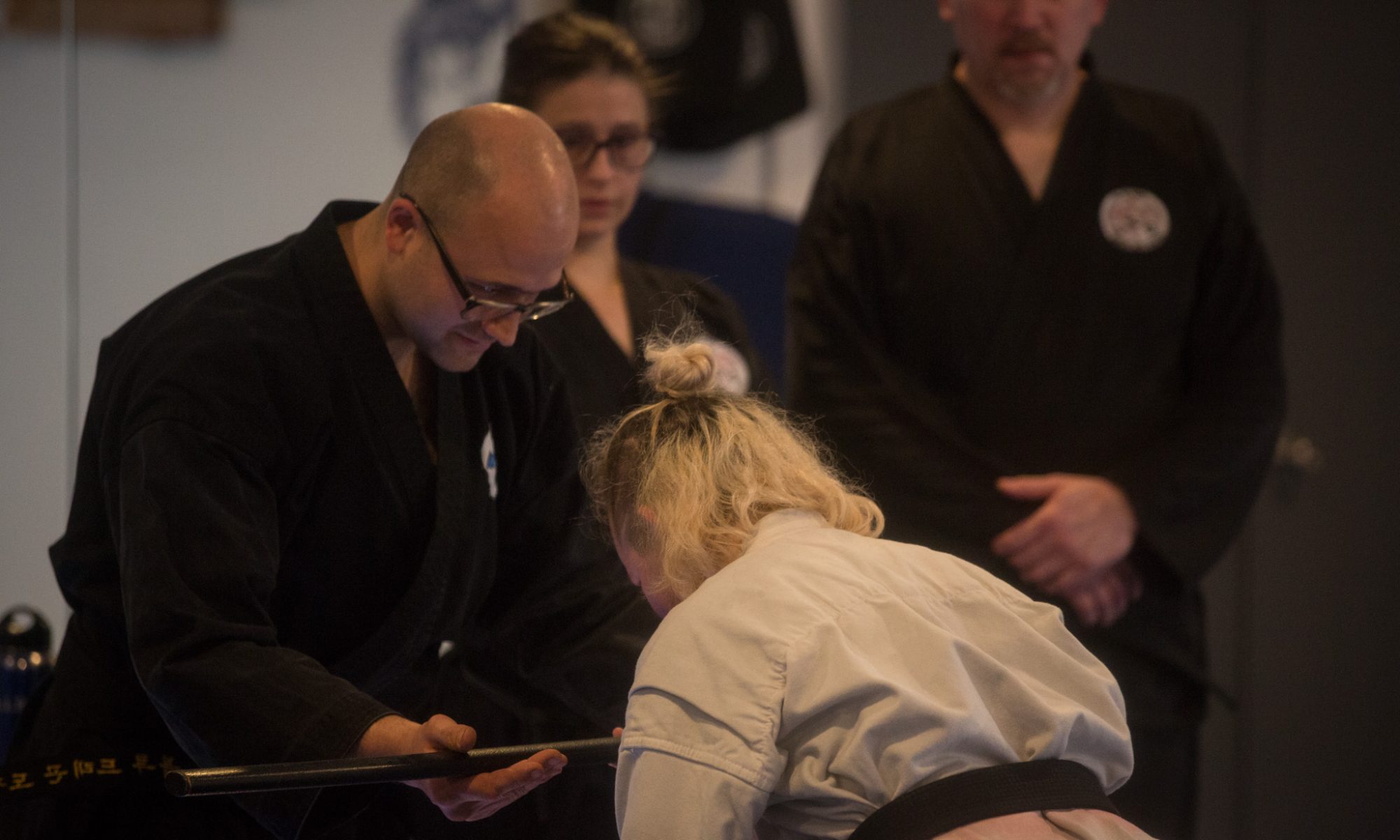Oh Do Kwan is an older style of Korean martial arts founded by General Choi before his concepts of Taekwondo fully took shape. The forms or “Tul“ that we do reflect this, in the way we move, the order that our forms are done in, and which forms we include in our art.
During my training under Master Littrell I was told that Oh Do Kwan consisted of 14 forms, far fewer than the eventual 24 that would be included in the later additions of the Taekwondo encyclopedia.
It is unclear which forms from the Taekwondo encyclopedia were considered the 14 forms of Oh Do Kwan, but it is my belief that the 1965 printing of Taekwondo encyclopedia was the last time the written record reflected what was being taught in Oh Do Kwan. Therefore the forms that are taught at Blue Dragon Dojang today are taken for that. The under belts Chon-Ji, Dan-Gun, Do-San, Won-Hyo, Yul-Gok, Joong-Gun, Toi-Gye, Hwa-Rang, Choong-Moo, Kwang-Gae. Then to hold true to Oh Do Kwan having 14 forms, you will learn 2 forms between 1st Dan to 2nd Dan “Sensei’s choice” and 2 forms between 2nd Dan to 3rd Dan, “practitioners choice”.
It is my believe that the direction a practitioner goes after obtaining their third degree is many and varied and far less structured in Oh Do Kwan then a lot of other arts, so although I have learned all 20 Korean forms as outlined in the 1965 Taekwondo Encyclopedia so I can help my students learn any or all of them as they advise in their studies. My students may choose to specialize in another aspect of the art and are only required to learn the 14 Tul of Oh Do Kwan.
Timeline for the development of Korean forms;
When Tae Kwon Do was found in 1955 it had 3 Korean forms Hwa-Rang, Choong-Moo and Ul-Ji and 9 Japanese forms
1959 in the fist Tae Kwan Do hand book there were 5 Korean forms.
Hwa-Rang, Choong-Moo, Ul-Ji,
U-Nam-(named after the Korean President) and Sam-Il and then 9 Japanese forms. Karate Katas: Hei-an, Bat-Sai, En-Bi, Ro-Hai, Kouh- Shang-Kouh, Tet-Ki, Jit-Te, Han-Getsu and Ji-on
(U-Nam, is no longer practiced and I have not been able to find a demonstration of it to see what it looked like.)
By 1965 In the second Tae Kwon Do hand book there was 20 Korean forms, Chon-Ji, Dan-Gun, Do-San, Won-Hyo, Yul-Gok, Joong-Gun, Toi-Gye, Hwa-Rang, Choong-Moo, Kwang-Gae, Po Eun, Gae-Baek, Choong-Jang (replacing U-Nam because of the Presidents disgrace), Ul-Ji, Sam-Il, Yoo-Sin, Ko Dang, Choi-Yong, Se-Jong, Tong-Il and still the 9 Japanese forms.
By 1970 the last 4 Korean forms were developed make a total of 24, Eui-Am, Moon-Moo, Yong-Gue, and So-San were added and the Japanese forms were abandoned, and then finally in 1980 Ko-Dan was replace with Juche. That completed the Chang Hon Tul as Play down by General Choi Hong Hi
